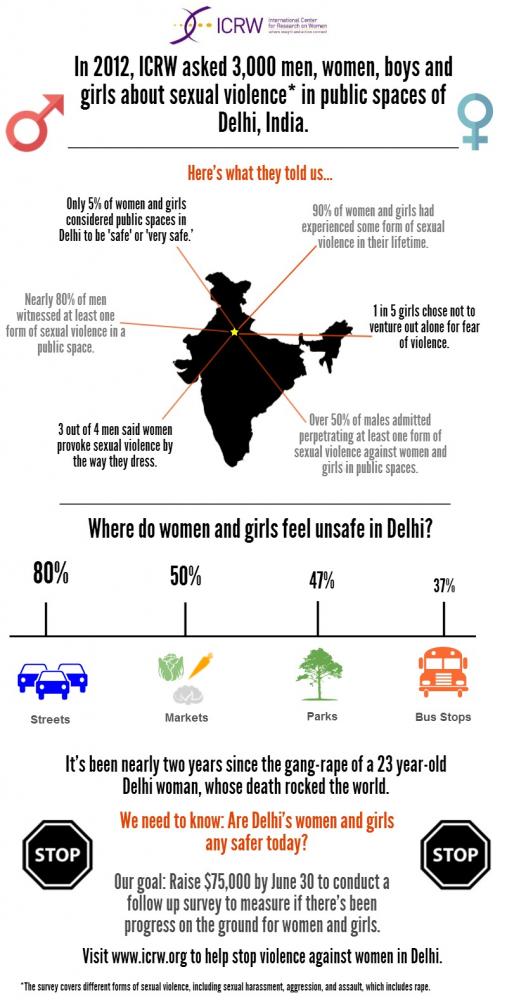Here’s the question: after the wave of publicity following the Delhi rape of December 2012, and actions by the government in response, how’s it going? Do women feel safer? Might they actually BE safer?
Thanks to the fantastic work of ICRW – the International Center for Research on Women – we may soon know.
In 2012, an ICRW survey asked about public safety in Delhi. The results found that 90% of women and girls had experienced some form of sexual violence in their lifetime.
Ninety percent? Did you catch that right? In my book, that’s pretty close to everyone. That should give pause for thought.
Why this problem? The reasons are complex and intractable and include male attitudes of entitlement and privilege, childhood experiences with violence, and the dowry, which often turns girls into an insurmountable expense for poor families. And that’s just getting started.
But the problem affects every woman’s daily routine, opportunity to work, and ability to travel to school, and Indian officials have promised to tackle it. After the 2012 attack, the Verma Commission quickly made recommendations to change India’s criminal law code. Provisions were make for quicker trials and enhanced punishment for criminals accused of committing sexual assault against women. This was seen as an important start: the government needed to take seriously any attack on women and also to hold perpetrators of sexual violence accountable for their crimes.
While these legal changes are important, the far more important work will be implementing these changes and enforcing the laws which already exist. That will require work with police and village leaders, educational initiatives to change attitudes, and, yes, a constant drumbeat of attention.
Fast forward from the 2012 events. Just last month, two girls, 14 and 15, were found raped and hanged in a village Uttar Pradesh in what some see as caste-based retribution. The girls were doing what girls and women all over India do: going into the fields at night to relieve themselves. (Approximately half of India’s 1.2 billion people have no toilets, but that’s another story.)
Clearly there are no quick fixes. Tracking progress on this issue and keeping it on center stage and in the public eye is critical. Which brings us back to ICRW. They are returning to Delhi neighborhoods, two years after the brutal Nirbhaya rape and the Verma Commission. They will be asking: have things changed? Are women and girls any safer in public spaces in Delhi?
I am looking forward to this important initiative.
And you?
Support ICRW – yes, they are fundraising for this effort. If you are interested and can support them, please do so. This is easy through Global Impact.
Look up ICRW to read more about their work.
Watch for more on my play, in pre-production, which explores men’s attitudes which lead to violence against women (VAW) in both India and the USA.


